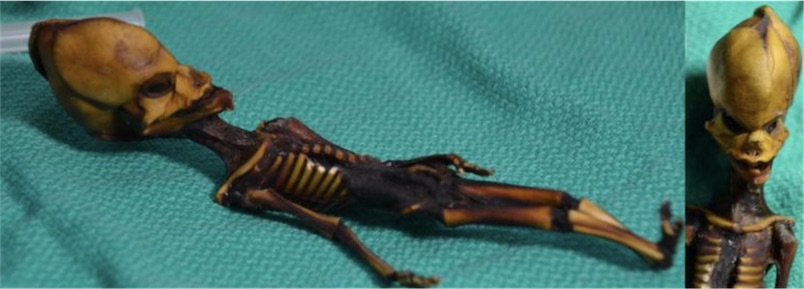
"I learned about this through a friend who was interested in the entire area of extraterrestrial life," (Stanford professor of microbiology and immunology Gary) Nolan wrote in an email. "He told me about a documentary coming out ('Sirius' ... you can find it on Netflix now) which was to feature the 'Atacama Humanoid.'
It was claimed that this was possibly the mummy of an alien.
"That was a significant claim in and of itself. More shocking though was the picture I was provided that was part of the online publicity. I decided to contact the movie directors (basically on a dare ...) to tell them it was possible to do a sequencing of the specimen (if it had earthly DNA ...) to determine its origin..."
The researchers were looking for what might explain the skeleton's small stature, as well as the abnormal rib count and other bone and skull oddities.
Dr. Atul Butte, another senior author of the study, was brought in to assist with evaluating the genome. Butte, the Priscilla Chan and Mark Zuckerberg distinguished professor and director of the Institute for Computational Health Sciences at the University of California, San Francisco, treated the analysis as though it were for a patient.
It revealed a number of mutations within seven genes. Together, these created bone and musculoskeletal deformities, like scoliosis, and skeletal dysplasia, known as dwarfism...
The way Nolan, Butte and their colleagues used their analytical tools to understand the mysteries presented by Ata's skeleton may provide a pathway for analysis of multiple genes to discover the roots of mutations.
Butte said he hopes that the technology and tools used in this study can help patients and their families receive diagnoses quicker, as well as helping to develop treatments for conditions that can be traced to genetic mutations.
"Researchers finally solve mystery of 'alien' skeleton" (CNN)
"Whole-genome sequencing of Atacama skeleton shows novel mutations linked with dysplasia" (Genome Research)


